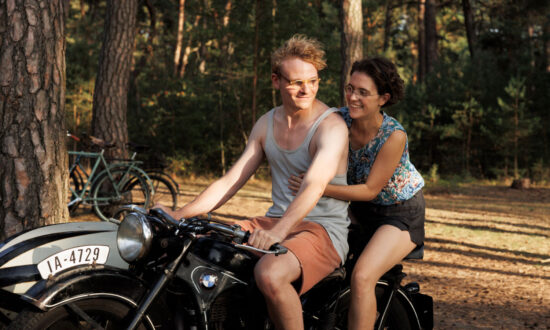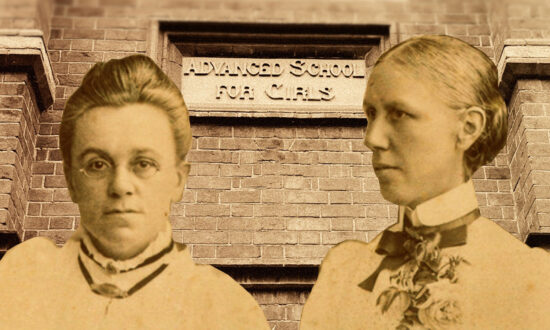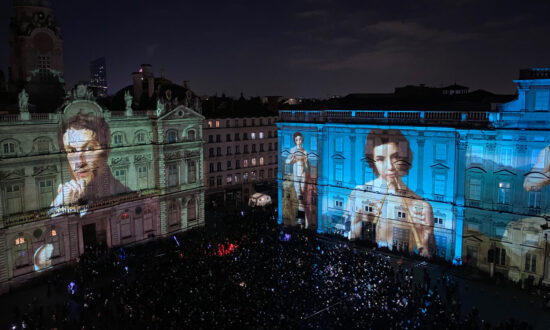The OzAsia Festival opened with a blast of energy last night (Thursday), thrilling the audience with this vibrant exploration of the wild yet fraught sensations of youthful self-discovery while simultaneously gifting them with a glimpse of a unique Indigenous culture.
Taiwanese art in any form is a rare treat in Australia, so the opportunity to experience this vital performance created by a collaboration of artists with Indigenous (Paiwan) heritage is an extraordinary privilege.
tiaen tiamen is a phrase in Paiwan (an indigenous Taiwanese language) meaning ‘me and us’, while Episode 1 points to this piece representing the first part of a trilogy that will ultimately explore the Paiwan understanding of the three stages of life: Pulima (youth), Puqulu (middle age), and Puvarung (old age).
This infectious performance began as the brainchild of acclaimed choreographer Bulareyaung Pagarlava and his desire to examine his own Indigenous tribal identity. From the bones of tiaen tiamen’s underlying philosophy to the muscles of its execution on stage, Bulareyaung Pagarlava has created something extraordinary, synthesising all he has gleaned from his experiences working with dance companies across the world, from the Cloud Gate Dance Theatre in Taipei to the iconic Martha Graham Dance Company in New York.
The theme of ‘me and us’ is clearly expressed in how central collaboration is to this work. Bulareyaung Pagarlava has brought together acclaimed Paiwan singer and songwriter aljenljeng tjaluvie (aka “ABAO”) along with sensational Paiwan artist reretan pavavaljung to forge a formidable Indigenous creative team. Like an explosive chemical reaction, this combination of the elements of dance, music and visual design has created a potent theatrical energy.
From the opening minutes of the performance, it’s clear how these three creative aspects meld into something greater than the sum of their parts. Boldly abstract designs play across both a rear screen and a thin scrim at the front of the stage, creating a three-dimensional space through which the dancers move.
A single figure appears behind a scrim patterned with bright designs that hover in a boldly inventive space somewhere between futuristic and tribal imagery. He begins to sing, a simple melody recalling nursery rhymes and playground chants. The patterns begin to flow with his voice and the music kicks in, infectious beats that perfectly encapsulate both the energy and frustrations of youth.
The dancers carry the audience through a visceral experience of various facets of coming of age. From the joy and freedom of childhood to the pressures of peers, from the awkward yet exquisite flowering of individuality and sexual awakening and finally to rebellion in the face of the conformist weight of the surrounding society, this beautifully fraught mix is powerfully expressed by the exceptional talent of the Bulareyaung Dance Company.
Yet the energy is not all neon-bright, pulsing electronica and furious choreography. Interspersed throughout are moments of quiet beauty and tortured vulnerability, the most powerful a solo in which a dancer removes his mask, clearly wrestling with identity as he writhes within the stark cone of light beaming out from the wings.
The troupe, their faces for most of the performance obscured with dark, glittering masks, were simply mesmerising, their physicality perfectly highlighted by flesh-toned body stockings. Dancers aulu tjibulangan, giljigiljaw tjaruzalum, Kwonduwa Takio, Siyang Sawawan, Chen Sheng-chih, Kaniw Panay and, in particular, guest dancer Hsu Ting-wei had the audience in their thrall for the entire 65 minutes.

Get InReview in your inbox – free each Saturday. Local arts and culture – covered.
Thanks for signing up to the InReview newsletter.
A surprising highlight occurred after the adrenaline-charged climax and the troupe had taken their bows. Bulareyaung Pagarlava emerged from the wings and passed a microphone to each of the dancers in turn. Now maskless and lit by the inclusive warmth of the house lights, the dancers introduced themselves, telling us which tribe they belonged to and allowing us to see each dancer’s individual personality emerge from behind the mask.
This is collaboration at its finest: a bold and effusive expression of an Indigenous people who are determined to not merely survive but to reclaim space and express their relevancy as a living, breathing, and thoroughly modern people. Do not miss it.
tiaen tiamen Episode 1 is playing at the Dunstan Playhouse until October 21 as part of the 2023 OzAsia Festival. Read more OzAsia stories and reviews here.
Support local arts journalism
Your support will help us continue the important work of InReview in publishing free professional journalism that celebrates, interrogates and amplifies arts and culture in South Australia.
Donate Here




